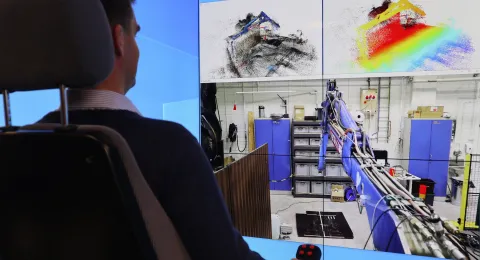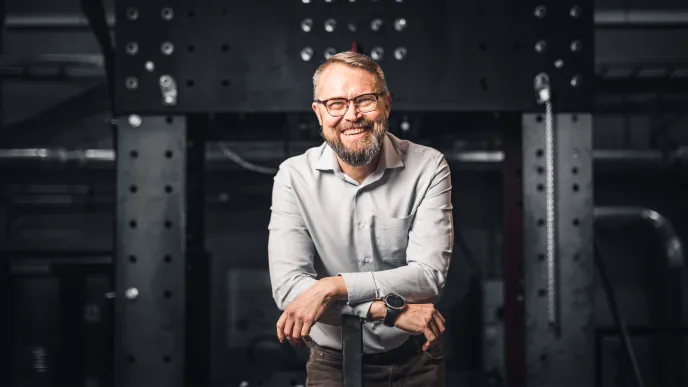The digital revolution in the industrial sector affects how companies manufacturing heavy machinery produce services and develop operations. In Finnish industry, mechanical engineering is one of the fields strongly influenced by the digital revolution, which further creates a need for software and know-how development.
Real-time simulation is being harnessed to improve the durability of heavy machinery and to promote the well-being of machine operators in a new research project by LUT University, the University of Oulu, and Aalto University. Simplifying a machine’s operation reduces stress experienced by the operator and mechanical stress on the machinery.
“Finnish high-technology products are often largely customized to customer needs and are used globally. Software development for customized machines requires machine-specific information and an understanding of the machine’s behavior to make the software work efficiently and as planned,” says Project Manager Kirsi Kokkonen from LUT University.
Real-time simulation and artificial intelligence techniques enable the development of intelligent features for heavy machine applications already in the planning phase. This influences productivity, efficiency, and the operator's well-being.
"In modern simulations, it is possible to accurately model not only the machine, but also the environment, so there is great potential to use these models in the development of new features for the machines," says Sandvik Mining and Construction Oy's Engineering Manager Arto Vento.
Operator assistance systems to help simplify machine control
The Santtu joint research project develops support systems for work machine operators and heavy industry machines in close collaboration with Finnish industry.
The goal is to simplify the control and use of machines with the help of semi-autonomous operator assistance systems. These systems can be used to reduce the operator's cognitive load and the stress on the device, improving the machine’s lifespan, usability, and productivity.
Combining physics-based real-time simulation, digital twins, and artificial intelligence techniques makes it possible to create semi-automatic systems. The objective is to develop a model-based, artificial intelligence-assisted solution that offers collision prevention, strain optimization, improved accuracy, automation of work routines, and human-centered user interface design. This lowers the skill requirements for the efficient use of the machine, which realistically expands the target market – especially in rapidly growing market areas.
“Simulation – especially with the help of real-time dynamics calculation – makes it possible to develop software and features that are customized for each machine, enabling energy-efficient use and improving the productivity of the equipment,” says Emil Kurvinen, professor of machine design at the University of Oulu.
The project involves Sandvik Mining and Construction Oy, Raute Oyj, Ponsse Oyj, and Mantsinen Oy, as well as the three universities LUT University, Aalto University and the University of Oulu. In addition, Mevea Oy, GIM Robotics Oy, Sustainable Industry X (SIX) and FIMA Ry are monitoring the project. Moreover, the project is connected to the Sandvik Shift'25 program, which has received Veturi funding from Business Finland. The project is funded by the Business Finland co-innovation instrument and is part of the Sustainable Manufacturing program.
Santtu
The project is implemented as a collaboration between three universities:
-
On LUT University's interdisciplinary SIM platform including the following research groups: Lea Hannola's innovation management, Aki Mikkola's virtual design, Paavo Ritala's strategy and innovation, Minna Saunila's performance management, and Heikki Handroos's intelligent machines.
-
In the mechanical and vehicle engineering research group of the material and mechanical engineering research unit of the University of Oulu, led by Emil Kurvinen, professor of mechanical engineering
-
At Aalto University's School of Electrical Engineering, in the Intelligent Robotics group, led by Ville Kyrki
What?
Simplification of the control and operation of a machine through semi-autonomous operator assistance systems
Why?
To decrease both the cognitive stress of the operator and the mechanical stress to the machine to increase the lifetime and usability of the machinery
How?
By combining beyond state-of-the-art physics-based simulation models, digital twins and artificial intelligence techniques to reach more advanced autonomous features
Results
Model-based AI assistant for collision and stress prevention, improved accuracy, automation of experiential routines, and human-centric HMI design
More information:






